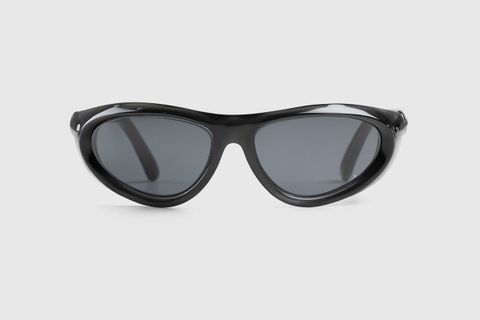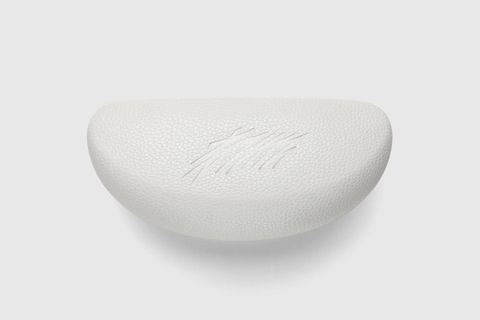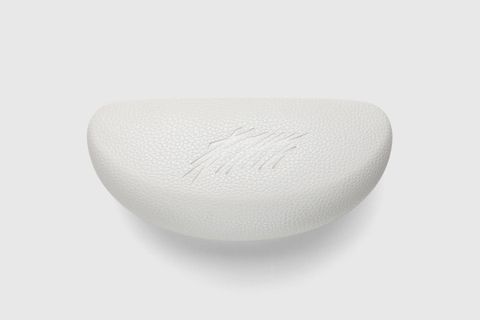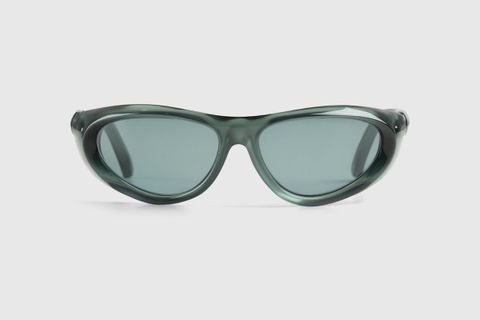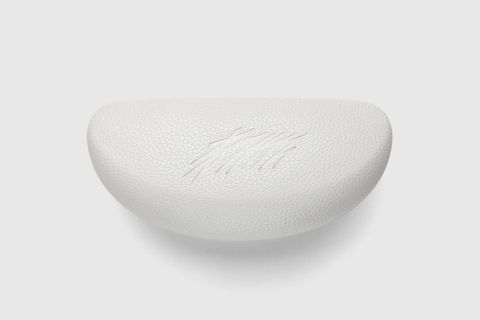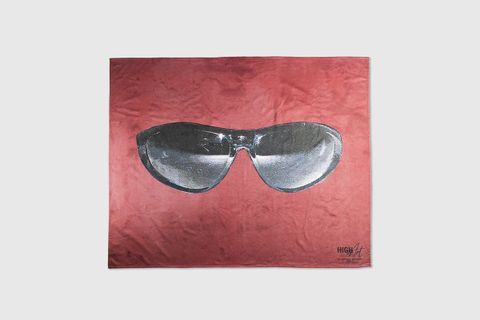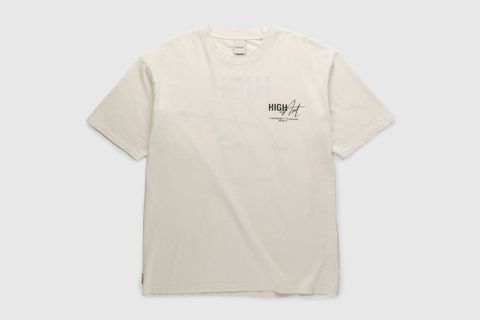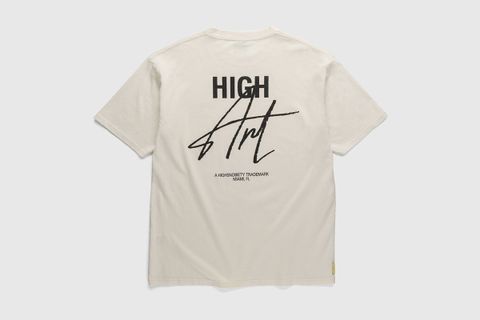The Unseen Works of Tobias Spichtig
HIGHArt is Highsnobiety's ode to all things artistic. From our “museum store” pop up in Miami, a print magazine, and exclusive content and product with collaborators like Chito, Honey Dijon, Parra, Matt McCormick and more, we’re going deep on the art world. Explore HIGHArt here.
To most, walking into a gallery is approached in a similar way as walking into a store: you imagine yourself as the person in control of the interaction with the objects around you, how you feel about them, and whether you’d like to buy them or not. But when dealing with the work of Swiss artist Tobias Spichtig, those tables are often upended if not reversed. For his series of paintings of sunglasses (often on a single color background), the disembodied sunglasses seem to be staring at you, with the figure of a human eye barely predictable behind the glasses. While for his “geist (ghost)” series, used clothing coated in resin and shaped like people are placed around galleries, as a stand-in for viewers. Walking through an exhibition by Spichtig, you get the sense that you are the one being judged, that it’s you who has to prove something to these minor remnants of human life that fill the gallery and its walls.
For HIGHArt, Spichtig has produced a limited edition series of the sunglasses from the aforementioned series. In these collaborations, Spichtig’s work picks up even another layer of complexity, keeping the same mystique of his former work, only wrapped in a wider consumerist skin.
Of course, Spichtig’s work still exists mostly within the gallery walls. For a recent show at the Swiss Institute in New York, he filled the basement with jewelry display cases from the Diamond District in Midtown Manhattan that had been thrown away, and surrounded them with two abstract paintings, geist sculptures, and mirrors. The mirrors form a final link in the lineage of the work looking at me, looking at you, and now you looking back at all of it. It’s an ouroboric process played out endlessly through a culture that Spichtig has spent years making out from the objects of our own discarded culture.
Can you tell me about the works you’ve made for HIGHArt?
We’ve made some real sunglasses, after my series of sunglasses paintings. Also, a beach towel that has one of the sunglasses paintings on it. It’s the first time I’ve made physical objects based off the paintings.
What are the sunglasses paintings?
They’re paintings of sunglasses. The paintings are medium formats with prints of sunglasses painted with oil on a monochrome background. They look a bit like portraits but both of an object and suggesting a subject. The sunglasses were photographed in the dark with a flash, mostly laying on the floor or a table, so the reflection of the flash looks like a sunset. So they’re really in between object and subject.
Why did you decide to start making the sunglass paintings?
I had these photographs of sunglasses at night and they had this perfect quality somewhere in between object and character. I’ve always loved sunglasses and at the time started collecting a lot of them. I was also reading this book one summer about medieval theory of sight and vision by Nicholas of Cusa, The Vision of God. That influenced the paintings.
A lot of the work you do seems to be based in fashion to a certain extent. You've done work with Balenciaga, you've modeled as well. Do you think the sunglass paintings are kind of a derivation of that in interest in fashion? And where does the interest in fashion come from?
I’m not particularly interested in anything. I just like painting and images and what one can do with that, more than fashion as a subject. I like things that have a certain intensity, like a good music track. I guess my work is mostly about life and what comes with it. More the little simple things, which then again includes and can mean a lot. So I don't know. But I’ve always liked clothes and garments and I use it as material, as much as I use images or text as material. But I guess fashion plays an important role in painting throughout history as well as in daily life. I like things that look good and thats what fashion wants to make all the time I guess. But then again I think that fashion and especially the industry plays an important role currently but that’s because of a very few people that do great work which influences a lot of people.
What sculptures did you make for Balenciaga?
I continued a series of sculptures made out of clothes and resin that look and feel like ghosts in a way. I used to make the sculptures out of my own clothes that were then held in resin as figurative sculptures. They're like empty people, but at the same time, they're not, because they wear clothes. So it's the opposite of The Emperor's Clothes. Maybe they're all emperors or peasants, I don't know. And then Balenciaga approached me asking if I would use their clothes for these sculptures. It was like the ghosts went from thrift store to wearing high end fashion.
When you're talking about the sunglasses, it's almost inhuman in a way. There are sunglasses, but the human is not present, the human is implied but not present. It seems to be the same thing with the Geist. Do you see a connection between that and this kind of interest in disembodied objects in a way?
Maybe its quite the opposite. Absence triggers a strong presence in a way. As in, a portrait is often the person that it captures, but it’s also not. And sometimes even if it's just kind of recognizable, it's exactly what it captures. So there's always more to it.
How do you differentiate between sculpture, painting, and fashion?
These are very different things. Painting is the most direct and I think luxurious medium there is. It’s like a music track that one sees and never stops. Sculpture is a useless object, almost like augmented reality without a device. And fashion is more practical and can be a lot of things. It can be like art but it has a different goal in mind than art.
I've followed your work for years now, and I also interviewed you a couple of years ago. How do you think your work has changed over the past years?
On the one hand it’s changed a lot, on the other it hasn’t changed at all. It’s hard to know how to talk about it, but I think it’s gotten more personal and at the same time more accessible and easier to grasp for other people.
Could you talk about how you got started making work?
I don’t really know when I started. It’s always just something that one grows into. Of course I loved to draw as a kid and so on, but these things happen and then they intensify.
What are you working on now?
Mainly abstract paintings. Two of these new paintings are in a show at the Swiss Institute in New York. I’m really interested in ornaments and handwriting at the moment. Things that one can’t really place but still have a strong presence. I wanted to make abstract works which are not about gestures and marks and all that but also not about structure. They’re very abstract but somehow beautiful.
How did you make the sunglasses for Highsnobiety?
I’ve always loved sunglasses. Thats also why I painted them. I have a good collection and there are a lot of models I love. Still, some of them are almost perfect but not quite and others are so cheaply made that one can’t wear them. I used one of those for my paintings. So I wanted to make a pair that I find perfect. For now at least. I have some more ideas. What I like about these is that the frame has the same material like the lens. So they look a bit like one piece melted together. Not in a sense of having something wrapped around your head, but to really have a sculpted frame made out the same material as the lens.
